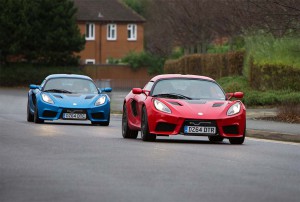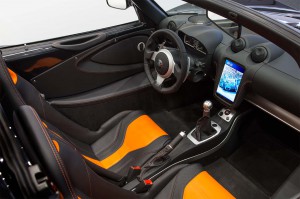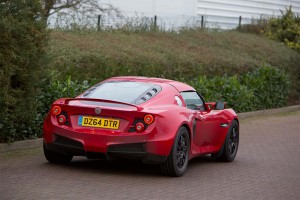
Detroit Electric promises to have the first of its delayed SP:01 sports car in showrooms early this year.
Finally. Belatedly. Maybe? More than a year after it was originally set to go into production, start-up carmaker Detroit Electric insists it will actually begin rolling out its battery sports car in the next few months, offering up images of what it insists will be the final production design.
But while the basic look of the Lotus-based 2-seater is largely in line with the prototype first shown at the 2013 Shanghai Motor Show, one key detail has changed. Despite its name, Detroit Electric plans to assemble the SP:01 not in the Motor City but in the British town of Leamington Spa, a couple hours from the Lotus plant.
Holding to the original plans, the company says it will produce just 999 of the little sports cars before shifting to more mainstream electric vehicles. And holding out an olive branch to the officials who worked hard to bring the project to Michigan, the company says it may still produce a battery sedan in the Motor City at a later date.
The company maintains its headquarters in midtown Detroit.
(Mercedes-Benz F015 is a hydrogen-powered, autonomous lounge on wheels. Click Here to check it out.)
The heart of the SP:01 is a 210-kilowatt, or 285-horsepower, electric motor. In an unusual move for an electric vehicle, buyers will have the option of ordering the sports car with a four-speed manual gearbox – single-speed transmissions are the norm – with optional single or twin-speed automatics.
The maker claims the SP:01 will be able to launch from 0 to 60 in 3.7 seconds, reaching a top speed of 155 mph, supercar numbers in a world where most battery-electric vehicles struggle to deliver 10-second launches and top speeds of around 100 mph.
About the only other pure battery-electric to match that performance is the Tesla Model S. Detroit Electric won’t quite get Tesla’s range, but at a promised 185 miles per charge, it would still deliver twice what most electrics currently deliver.
(VW Golf R Touch concept actually uses touch-less gesture controls. Click Here for a closer look.)
The final design offers some subtle but notable revisions from the original flying buttress layout. The production Detroit Electric SP:01 opts for a fastback shape, with a large rear wing and underbody diffuser newly added.
Another revision comes with the addition of an 8.4-inch, vertically mounted touchscreen displays. Apparently lifting a page from the Model S manual, it replaces the prototype SP:01’s analogue displays and switches.
The production model will boast a number of upscale touches, including leather or optional Alcantara sport seats. Along with images of the production model, the company said it will be selling the sports car in Asia and Europe, as well as North America. Ad it announced a new partnership with Integrated Energy, which serve as its official Korean distributor – sales there set to start later this year.
(Toyota will give away access to 1,000s of fuel-cell patents. Click Here to find out why.)
For the moment, no official price has been announced, though it was previously expected that the SP:01 would come in around $135,000, putting it up against the likes of the BMW i8. Like the Bavarian plug-in hybrid, the Detroit Electric model makes extensive use of carbon fiber to hold down mass, improving range and performance.
The start-up borrowed its name from an earlier battery-car manufacturer that came unplugged during the Great Depression. Its original plans drew plenty of skepticism considering the short timeline company officials laid out. A 2015 debut would have seemed much more realistic.
Now, whether potential buyers take the new plan seriously remains to be seen. But if the Detroit Electric SP:01 meets its performance targets, as well as quality and reliability bogies, those 999 vehicles could go quick, even at a time when gas prices have collapsed.


